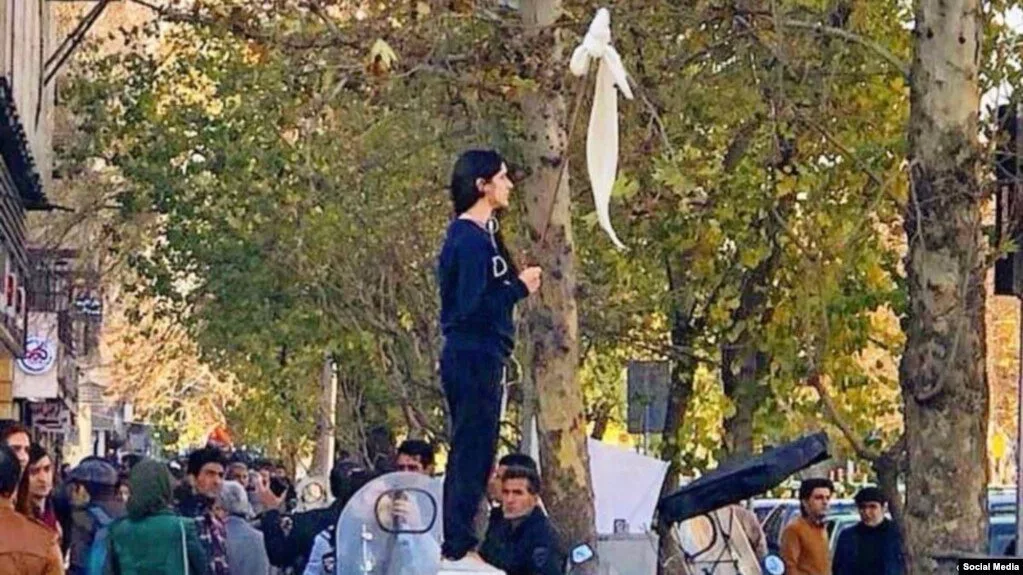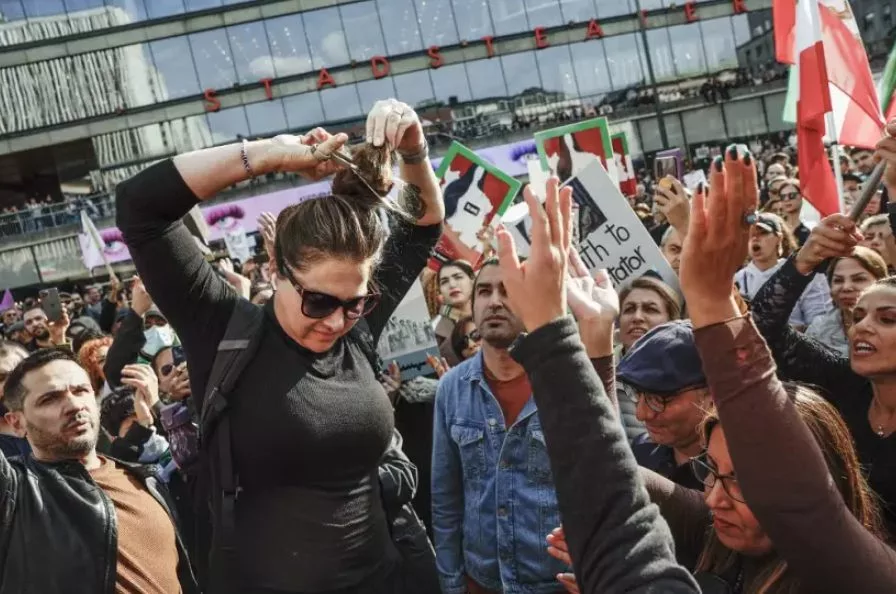Iran Executes Two Convicts Over Anti-Government Protests: Iran Anti-Hijab and Anti-Government Protests 2022


On December 12, Iran conducted the second execution in the wake of the ongoing anti-government protests in the country by publicly hanging a 23-year-old man named Majidreza Rahnavard after a secret legal proceeding. Executed only 23 days after being arrested, Rahnavard was declared of committing “enmity against God” as he was found guilty of murdering two representatives of the Basij Resistance Force amidst the protests.
The first execution of the protests was carried out on December 8. Mohsen Shekari, aged 23, had been sentenced to be executed on October 23 for injuring a Basij paramilitary member at a protest in Tehran.
Both these executions have been condemned and regarded as inhumane and unfair by human rights groups both in Iran and around the globe, given the secret and “unfair” legal proceedings.


Following the nationwide riots sparked by the death of Mahsa Amini, multiple Iranian demonstrators were given the death penalty on the grounds of committing “moharebeh” (offence/enmity against God).
What Happened to Mahsa Amini?
22-year-old Mahsa Amini had come to Tehran from the Kurdistan province to visit her relatives and was arrested on September 13 by the state’s Guidance Patrol. The reason for her arrest was the violation of Iran’s rigorous rules on hijab or headscarf. Her brother, who was with her at the time, was assured that she would be sent to a detention facility for a training session on hijab and released soon after.
However, a few hours later, Amini’s family was informed that she had been admitted to the Intensive Care Unit at Tehran’s Kasra Hospital. The police claimed that Amini had been taken to the detention centre to attend the hijab lessons as promised when she suddenly collapsed due to a “heart problem”.
Disputing the police’s claim, Amini’s family maintained that she, in fact, had not been suffering from any health issues. Furthermore, according to eyewitnesses present at the scene of her arrest, Amini had been beaten by the police inside the van on her way to the detention center.
The doctors told her family that she had had a heart attack or a stroke and her brain was unconscious when she had been admitted.
After being in a coma for three days, the 22-year-young soul departed this life on September 16.
According to reports, she died from a skull fracture caused by multiple severe hits to the head.
Amini’s father informed an Iranian news site that although he was not allowed to see her body in the hospital, he could spot a fragment of her foot which appeared to be bruised.
Hijab Laws in Iran
The post-Islamic-Revolution regime of Iran necessitates wearing a hijab in public for women over nine years of age.
According to article 638 of the country’s Islamic Penal Code, women without a hijab in public are to be sentenced to up to two months of prison or a penalty of 50,000 to 500,000 Rials in fine.
When a woman fails to abide by the rules on public attire, she may be fined, arrested, or mentally/physically harassed by the regime’s Morality Police.
In response to the protests against these rigorous policies on women’s clothing, in December 2017 the authorities declared that the police would no longer detain and prosecute women for violating the dress code. But soon, the policy was reversed following widespread protests against the government. The protests involved women conveying their objection to the hijab requisites by taking off their hijabs and holding them aloft.
These demonstrations led to the declaration of 10 years of imprisonment for those encouraging the removal of the hijab on the grounds of “inciting corruption and prostitution” as per article 639 of the Islamic Penal Code.
Enforcing a mandate for “hijab and chastity”, Iran’s current president, Ebrahim Raisi, imposed strict regulations on women’s clothing, including a firm workplace dress code. Permission to enter government offices and banks, use public transport, etc., is denied to women not wearing hijab appropriately. According to the requisite, an “appropriate” hijab means draping the headscarf in such a way that no part from the hair to the shoulders is left bare.
The government’s increased involvement in the enforcement of the hijab meant that the Morality Police became more active in monitoring and penalizing women for violations of the hijab rules. Showing even a tiny amount of hair would lead to detentions, assaults, and abuses by the Morality Police.
What Mahsa Amini faced was beyond brutal, but it was not the first time that an Iranian woman experienced severe mistreatment from the state’s morality police. In July this year, 28-year-old Sepideh Rashno, an active protester against Iran’s Hijab and Chastity Day observed on 12 July, was arrested for defying Iran’s acceptable clothing standards.
Rashno’s apology video was then broadcasted on state TV. Viewers and human rights advocates insisted it was a “forced apology”, given her dejected demeanour and the bruises all over her face. She was held in custody for 1.5 months provoking significant protest campaigns against her arrest, and was released on bail on August 30.
The Protests Over Mahsa Amini’s Death
The unfortunate demise of Mahsa Amini sparked massive outrage all over Iran. The demonstrations that started after Amini’s funeral on September 17 on the streets of her hometown in the Kurdistan province, escalated to over 80 cities in the country, taking an enormous form in the capital. Women expressed their anger and resentment towards the regime by publicly burning down hijabs and chopping off their hair. Diverse groups of protesters assembled together to fight for “fundamental rights”, exhibiting a level of outrage that the country had never seen before.
Through the protests, Iranians demonstrated their outbursts over the brutality of life under an oppressive regime. They expressed their antipathy to not only the limited women’s rights in the country but also the government’s regulations on modesty, the handicap imposed on freedom of political choices and expression, and the system’s unfair behaviours towards ethnic minorities.
The Government’s Retaliation
Since the beginning of the protests, police confronted the demonstrators with violent force, equipped with batons, tear gas, firearms, and metal pellets. Videos and photographs of unarmed activists being attacked and harassed by the police during the protests all over the country soon went viral across the world.
Military units, advanced weapons, and combat vehicles stationed in Kurdish territories for dispersing the crowds have been used to arbitrarily kill the locals. Protesters were arrested and locked up in warehouses when jails became overcrowded.
The country’s internet access was taken down by the government to make it difficult to mobilize demonstrations and communicate information.
US-based Iranian human rights organization HRANA has reported that more than 450 people have been killed and hundreds have been injured by the police as of December. At least 18,000 protesters have been arrested.
Amnesty International reports that so far 11 cases of death sentences have been handed down to rioters who were convicted of committing “moharebeh”. Two of them have already been executed following supposedly “sham trials”. Another nine people have been prosecuted for actions that might result in a death sentence.
Global Solidarity with the Protesters
As much as Mahsa Amini’s death enraged the Iranians, it shocked and angered the whole world as well. Demonstrations and protests spread to other countries, with people from all over the world following and sharing Iranian narratives and footage of the events to spread awareness about the topic globally.
Even world leaders have denounced the Iranian government’s behaviour. International entities such as Canada and the United States, and the European Union have imposed human rights sanctions against Iran’s government in addition to those already in place.
To show solidarity with the protesters back at home, Iran’s football team opted out of performing the national anthem in their tournament opener at the FIFA World Cup in Qatar. Iranian fans were also spotted demonstrating anti-government sentiments outside stadiums.
Yet, the Iranian government has continued to repress the demonstrators. The country’s supreme leader blames America and the Zionist entity for orchestrating riots and unrest to overthrow the current regime.


Will Iran Modify Current Hijab Laws?
Amid the 3-month long anti-government protests, Iranian officials have announced that the country’s judiciary and parliament would be reviewing the decades-old mandatory hijab laws. However, any changes that may be employed will mostly depend on the conservatives who firmly stand against individual choice in wearing hijab.
Visit our Instagram and Facebook.
Follow The Interlude for more.














